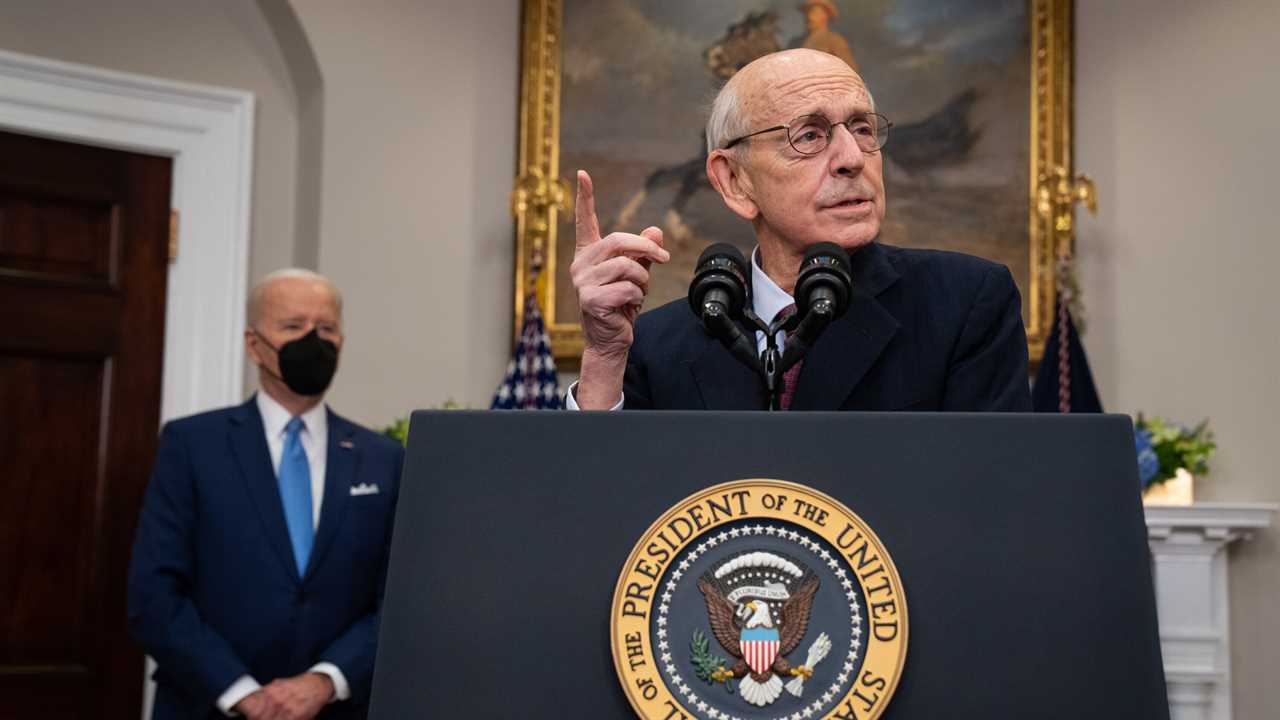
WASHINGTON — Justice Stephen G. Breyer’s successor at the Supreme Court may turn out to possess a blazing intellect, infectious charm and fresh liberal perspectives. But there is no reason to think the new justice will be able to slow the court’s accelerating drive to the right.Indeed, the court’s trajectory may have figured in Justice Breyer’s retirement calculations, said Kate Shaw, a professor at the Benjamin N. Cardozo School of Law. “There’s a good chance,” she said, “that the dynamics on the current court — both the speed and magnitude of the change that’s coming — had some impact on Breyer’s decision to go now.”He may have figured, she suggested, that someone else might as well try to stand in the way of a juggernaut committed to fulfilling, and fast, the conservative legal movement’s wish list in cases on abortion, guns, race, religion and voting.In a letter to President Biden on Thursday, Justice Breyer, 83, said he would step down at the end of the Supreme Court’s current term, in June or July, if his successor has been confirmed by then. But that liberal-for-liberal swap will do nothing to alter the power and ambitions of the court’s six-member conservative supermajority.Its members, all appointed by Republican presidents, seem largely unconcerned about a sharp dip in the court’s public approval, caustic criticism from the liberal justices or the possibility that Congress could add seats or otherwise alter the court’s structure. Facing no perceived headwinds, the conservative majority seems ready to go for broke.“This is a court in a hurry,” said Stephen I. Vladeck, a law professor at the University of Texas at Austin.The shape and speed of the court’s conservative agenda have come into focus in the last six months.Most notably, the court repeatedly refused to block a Texas law that bans most abortions after six weeks. The law is flatly at odds with Roe v. Wade, the 1973 decision that established a constitutional right to abortion and prohibited states from banning the procedure until fetal viability, around 23 weeks.The court also repeatedly thwarted initiatives by the Biden administration to address the coronavirus pandemic, blocking an eviction moratorium and a vaccine-or-testing mandate for large employers. And it refused to block a lower-court ruling requiring the administration to reinstate a Trump-era immigration program that forces asylum seekers arriving at the southwestern border to await approval in Mexico.ImageDemonstrators outside the Supreme Court in December as the justices heard arguments over a Mississippi law banning most abortions after 15 weeks of pregnancy.Credit...Gabriela Bhaskar/The New York TimesAlthough there was no split in the lower courts, the usual key criterion for Supreme Court review, the justices agreed to decide whether to overrule Roe entirely in a case from Mississippi and whether to do away with affirmative action in higher education in cases concerning Harvard and the University of North Carolina. In that last case, the appeals court had not even ruled yet.It is no surprise that conservative justices vote for conservative outcomes. But the pace of change, often accompanied by procedural shortcuts, is harder to explain.The three newest justices, all appointed by President Donald J. Trump, are 50 to 56 years old. If they serve as long as Justice Breyer, they will be on the court for another quarter-century or so. They have plenty of time.Nor do there seem to be looming departures among the other conservatives. The oldest, Justice Clarence Thomas, is 73, a decade younger than Justice Breyer, and lately, he has been particularly engaged in the court’s work.He has been an active participant in oral arguments, for instance, a change from earlier in his tenure, when he once went for a decade without asking a question from the bench.The six-justice conservative majority seems built to last.Still, two of the last four vacancies at the court were created by deaths — those of Justice Antonin Scalia in 2016 and Justice Ruth Bader Ginsburg in 2020.“Maybe there’s some sense that these majorities can be fleeting,” Professor Shaw said, “so you do as much as you can as quickly as you can because who knows what the future holds.”When the case on overruling Roe was argued in December, the court’s three liberal members sounded dismayed if not distraught at the prospect of such a stark shift so soon after a change in the court’s membership. Justice Ginsburg, a liberal icon, was replaced by a conservative, Justice Amy Coney Barrett, Mr. Trump’s third appointee to the court.“Will this institution survive the stench that this creates in the public perception that the Constitution and its reading are just political acts?” Justice Sonia By: Adam Liptak
Title: New Justice Will Have Little Power to Thwart Supreme Court’s Rightward Lurch
Sourced From: www.nytimes.com/2022/01/27/us/politics/new-justice-supreme-court.html
Published Date: Thu, 27 Jan 2022 23:04:27 +0000
Read More
 UK PoliticsWorld PoliticsVideosPrivacy PolicyTerms And Conditions
UK PoliticsWorld PoliticsVideosPrivacy PolicyTerms And Conditions
